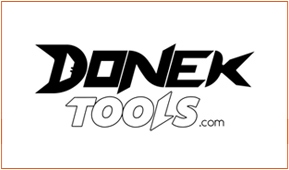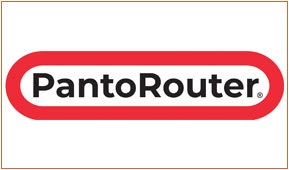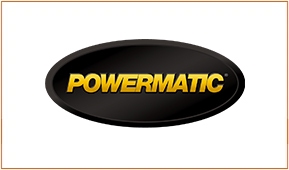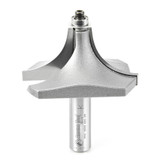PRODUCT DETAILS
Click an item to expand and learn more
-
- Fits in a 1/2 in router collet
- Enables you to cut thicker materials
- Maximum cutting depth: 1/4 in. (6.3mm)
- Minimum cut radius in materials thinner than 1/8 in. (3.1 mm): 1/8 in (3.1mm)
- Minimum cut radius in materials over 1/8 in. (3.1mm) thick: equals material thickness
What can the Drag knife cut?
Donek Drag knives are being used in industry and by hobbyists to cut a multitude of materials including but not limited to:
- Snowboard and ski base material
- Wood veneer for inlay/marquetry artwork
- Leather
- Carbon fiber pre-preg laminates used for aerospace, military, and automotive components
- Carboard for custom packaging
- Fabric – All sorts including dry fiberglass, carbon fiber, and Kevlar -> Coroplast
- Vinyl for signs and stickers
- Plastics like UHMW polyethylene, ABS, Lexan Film
- Paper – All kinds ? Foamboard
- Magnetic sheets
- Gasket Materials
Do I need special software?
No special software is required if you do not need or require sharp corners in your cuts. If you round off or fillet all the corners on the part you intend to cut, you can simply treat the Drag Knife as an engraving tool and cut on your vector/line. Care must be taken when creating your tool path to ensure the tools blade starts and ends on each cut in the same orientation.
If you want to cut sharp corners, or do not wish to worry about blade orientation at the beginning and end of each cut, you will need a CNC software / CAM package that offers drag knife tool path capabilities with corner actions. SheetCAM offers offset compensation as well making it possible to cut details smaller than the tools offset and as a result produces greater precision in your finished part.
How does the blade turn?
The tip of the blade trails behind the motion of the CNC. The precision bearings in the tool allow it to freely rotate and act much like the castor on an office chair.
Sharp corners are achieved with what are referred to as corner actions with the CNC tool path. These corner actions instruct the CNC to raise the blade such that the tip is just barely in contact with the material surface. The machine then moves through a very small circle around the tip of the blade causing the blade to rotate, while the tip of the blade actually remains in the same location. The machine then moves the blade back to the cutting depth and resumes cutting.
Read More
-
-
































